When designing Tasha’s Cauldron of Everything, the game designers at Wizards of the Coast tapped veteran RPG puzzle designer Elisa Teague to create nearly an entire chapter's worth of puzzles for your D&D game. Her work includes the masterful Alternate Reality Game that preceded D&D Live 2018: Stream of Many Eyes, known commonly as the “Leave No Stone Unturned” puzzle. Let’s expand on her masterful work and create simple, useful rules for designing puzzles for your dungeons!
What is a Puzzle?
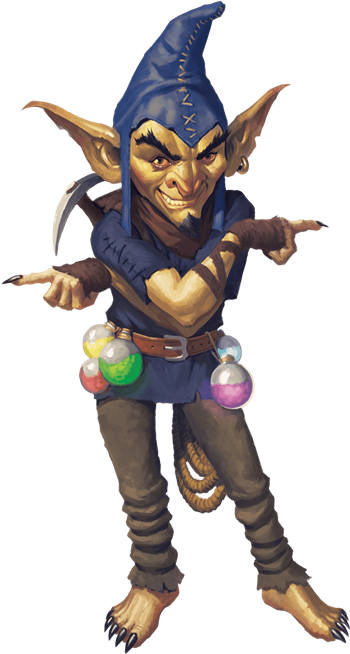 Of course, we all know instinctually what a puzzle is. It’s a test of cognitive skill to solve a challenging, often abstract task. There are dozens of different types of puzzles, and designing your puzzle around a classic archetype can make it easier to create a puzzle than starting from scratch every time. The trouble is, with so many different types of puzzles, how can you know what types are fun to untangle in D&D, and which will leave you bored?
Of course, we all know instinctually what a puzzle is. It’s a test of cognitive skill to solve a challenging, often abstract task. There are dozens of different types of puzzles, and designing your puzzle around a classic archetype can make it easier to create a puzzle than starting from scratch every time. The trouble is, with so many different types of puzzles, how can you know what types are fun to untangle in D&D, and which will leave you bored?
There’s no one-size-fits-all solution; every D&D group is made up of players with different tastes and preferences, so something that wins your Friday group over may fall flat with your Sunday group, and vice versa. And that’s to say nothing about your own preferences as a Dungeon Master! Don’t forget that you should be having fun in-game, too.
- Word Puzzles. Like the Reckless Steps puzzle in Tasha’s Cauldron of Everything, word puzzles rely on the players to identify words or letters, like an in-universe crossword puzzle.
- An oral cousin to the more visual word puzzle, a good riddle (like the Eye of the Beholder puzzle) gets you to think about hidden meanings in phrases.
- Number Puzzles. Some classic puzzles require you to arrange numbers in a specific order, like a Sudoku puzzle. Exact Change is a good example of this type of puzzle. Additionally, a number of puzzles in Tasha’s Cauldron of Everything also use numbers and words together, requiring you to think about the relationship between letters and numbers. Members Only is a good example of this type of combination puzzle.
- Logic Puzzles. These puzzles, like the medium puzzle Four-By-Four test inductive reasoning and relationships between puzzle elements. They are often solved using a logic matrix.
In-Character Knowledge versus Out-of-Character Reasoning
When solving a puzzle, should players use what they know from the real world, or can they only use the knowledge that their characters have? Likewise, should they use their own intelligence, or should they try to play to their character’s level of intelligence? How do you pretend to not know things if you’re playing an uneducated mercenary with only 8 Intelligence—or worse, how do you magically become smarter than you are if you’re playing a sage with 19 Intelligence, a genius-level intellect?
This vexing problem becomes worse if the Dungeon Master and the players are in disagreement about what the right way to handle a puzzle is. Disaster ensues if the DM wants the players to solve the puzzle in-character while the players want to use any means at their disposal to emerge victorious.
There’s no right answer to this problem—every table is different, after all—but the most one-size-fits-all solution is to just let the players use real-world knowledge and their own intellect to solve the puzzle. Don’t ask them to dumb themselves down to the level of their characters. And if a player isn’t as smart as their genius-level wizard, have some hints on hand that use the characters’ ability scores and skill or tool proficiencies to find information that they might not have otherwise thought of out-of-character.
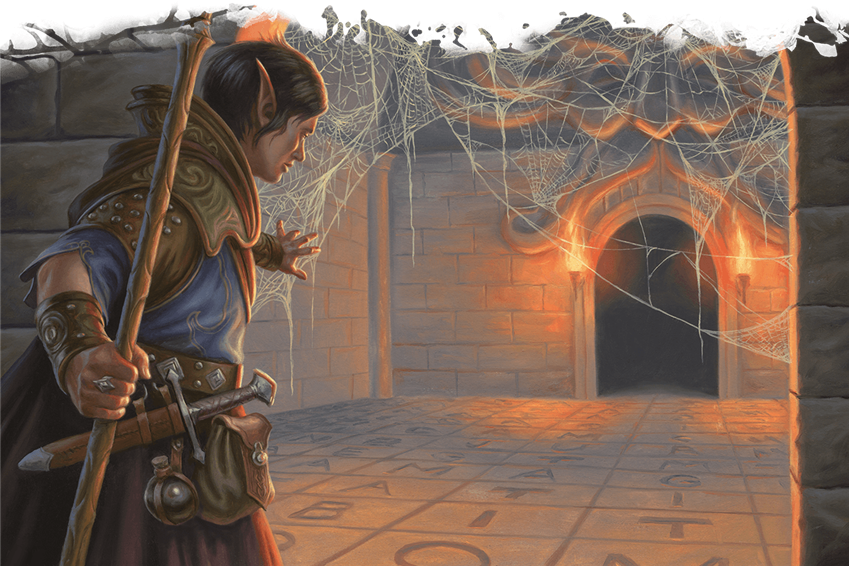
A Puzzle’s Story
Being a Dungeon Master means learning a little bit of game design to make sure that your game is specially tailored for your players. Soup from a can tastes fine, but imagine the difference between canned chicken soup and a hearty, homemade soup made from bones you’ve stewed for hours. If you want to make gourmet puzzles for your D&D group, you have to understand that the mark of a good puzzle isn’t necessarily that it confounds the players—it’s that it creates a satisfying story. D&D is a group activity played with friends, and often keeping the game moving is more important than providing a devilish challenge. The secret to making a good puzzle is landing the bullseye in the dead center of flow and difficulty.
That bullseye is a puzzle with a story arc with rising action and challenges, just like you might see in a Storytelling 101 class. If the puzzle was well-designed and well-suited to the players’ skill, they will feel like they’ve gone on a narrative journey when they solve it, rather than simply overcoming a speed bump. Here’s a three-step process to making a narratively satisfying puzzle.
The Question and the Statement
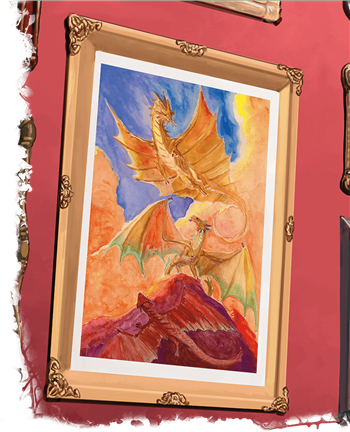 The puzzle begins by making a statement and posing a question. This could be a literal statement of terms, such as a bronze plaque which states: “To progress past this room, you must speak aloud the names of the Five Great Kings of Oa.” The room is filled with a dozen portraits of people, each with their name inscribed on the frame. In this situation the question is implicit; the room asks “which of these dozen people are the Five Great Kings of Oa?” The characters must figure out that these portraits have traits that a legendary monarch would have, such as a crown, a scepter, a signet ring bearing a royal crest, and so forth.
The puzzle begins by making a statement and posing a question. This could be a literal statement of terms, such as a bronze plaque which states: “To progress past this room, you must speak aloud the names of the Five Great Kings of Oa.” The room is filled with a dozen portraits of people, each with their name inscribed on the frame. In this situation the question is implicit; the room asks “which of these dozen people are the Five Great Kings of Oa?” The characters must figure out that these portraits have traits that a legendary monarch would have, such as a crown, a scepter, a signet ring bearing a royal crest, and so forth.
The statement doesn’t have to be so explicit, however. Consider how the puzzle changes if the characters entered this same room and you described the portraits, and then a locked door with the ancient royal crest of Oa upon it inscribed upon it five times in a pentagon. In this trickier scenario, the puzzle also requires the characters to:
- Realize that there’s a puzzle at all
- Infer the terms of the puzzle by their surroundings
Generally, it’s easier to give a puzzle an explicit statement and an implicit question. However, if you make your question explicit (perhaps a plaque upon the door which reads, “Only those who possess knowledge of history long-lost is worthy to pass me”), then you can still get the characters to infer the terms of the puzzle through their surroundings without requiring them to first realize that they’ve stepped into a puzzle.
The Wall and the Perspective Shift
All a puzzle really needs to be great is a statement and a question. That’s essentially just a riddle you’ve introduced some multimedia elements into. However, to make a puzzle truly exceptional requires you to borrow from the magician’s playbook. Anyone who’s seen The Prestige (the 2006 film by Christopher Nolan) knows that there are three stages to a real-life magic trick: the pledge, the turn, and the prestige. In many ways, this applies to a good puzzle, because the goal of the illusionist and the puzzle master are the same: tell a compelling story. The main difference is that the illusionist wants to conceal the inner workings of their magic, whereas the puzzle master wants the audience to understand the puzzle inside and out to discover the solution.
In this magician’s schema, “the turn” is when something that’s ordinary is revealed to be extraordinary. The audience’s expectations are turned on their head—it shifts their perspective. In a puzzle, the perspective shift occurs when the puzzlers hit a wall. Their premises were flawed; something they thought was certain about the puzzle—typically the statement—is wrong. It’s not an outright lie, that would be a dirty trick, but the statement was phrased in such a way to play upon your assumptions. This wall will stand impenetrably tall unless the puzzlers stop for a moment, step back, reconsider what they took for granted to be true, perhaps incorporate new information they learned elsewhere, and see the puzzle with fresh eyes.
Since this section of the puzzle is often where players get stuck, it’s important to have a few hints prepared (as discussed in the “Puzzle Elements” section of Tasha’s Cauldron of Everything). Having hints that the characters can make checks to discover helps strike a balance between not just player knowledge vs. character knowledge, but also between challenge and game flow.
One good way to do this is to tie the puzzle into the larger scheme of the campaign, or the even just the dungeon the puzzle is found in. In our portrait example, let’s say that the dungeon so far has been themed around dragons—the five colors of chromatic dragons, specifically. Statues litter the dungeon depicting ancient kings (with long-eroded faces), and each one of these kings has a differently colored chromatic dragon at his side. No such dragons appear in the portraits, but astute characters will realize that even though many of the people in portraits appear to be noble, even regal, only one portrait each shows someone dressed in black, blue, green, red, and white. These kings are not all dressed in regal finery, but instead wear the color of their bonded dragon.
The Epiphany
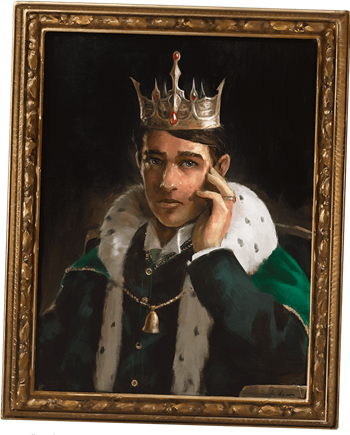 The perspective shift is the key to unlocking the entire puzzle. Once the characters have changed their perspective, the rest of the puzzle should rapidly fall into place, causing the wall that blocked them to crumble away until the solution is clear. This is a series of rapid-fire epiphanies as the puzzlers apply their newfound perspective to individual puzzle elements in turn. The key to this epiphany is rooted in the beginning of your puzzle; it has to be rooted in clear, simple concepts, not cheap tricks. Indie puzzle game designer Jonathan Blow (Braid, The Witness) told Gamasutra in 2014, "...the more that a puzzle is about something real and something specific, and the less it's about some arbitrary challenge, the more meaningful that epiphany is."
The perspective shift is the key to unlocking the entire puzzle. Once the characters have changed their perspective, the rest of the puzzle should rapidly fall into place, causing the wall that blocked them to crumble away until the solution is clear. This is a series of rapid-fire epiphanies as the puzzlers apply their newfound perspective to individual puzzle elements in turn. The key to this epiphany is rooted in the beginning of your puzzle; it has to be rooted in clear, simple concepts, not cheap tricks. Indie puzzle game designer Jonathan Blow (Braid, The Witness) told Gamasutra in 2014, "...the more that a puzzle is about something real and something specific, and the less it's about some arbitrary challenge, the more meaningful that epiphany is."
In our example, once a character realizes that each of the Five Great Oan Kings was bonded to a chromatic dragon, the realizations that each of the kings bears the color of their dragons should come fast and furious. “This one’s the only one wearing red! This one’s the only one in white…” until the puzzlers find the solution and open the door.
It’s possible that, if the players are particularly canny, their perspective will be properly aligned right from the start. So there will never be an epiphany, just a rather limp discovery that their first guess was right all along. It’s always disappointing when this happens, but don’t despair. Take that as an indication that you can ratchet up the difficulty of your next puzzle to really get your players thinking.
Have you ever included puzzles in your D&D campaigns? What was one that your players will never forget? Let us know in the comments!
Create A Brand-New Adventurer Acquire New Powers and Adventures Browse All Your D&D Content
 James Haeck is the lead writer for D&D Beyond, the co-author of Waterdeep: Dragon Heist, Baldur's Gate: Descent into Avernus, and the Critical Role Explorer's Guide to Wildemount, a member of the Guild Adepts, and a freelance writer for Wizards of the Coast, the D&D Adventurers League, and other RPG companies. He lives in Seattle, Washington with his fiancée Hannah and their animal companions Mei and Marzipan. You can find him wasting time on Twitter at @jamesjhaeck.
James Haeck is the lead writer for D&D Beyond, the co-author of Waterdeep: Dragon Heist, Baldur's Gate: Descent into Avernus, and the Critical Role Explorer's Guide to Wildemount, a member of the Guild Adepts, and a freelance writer for Wizards of the Coast, the D&D Adventurers League, and other RPG companies. He lives in Seattle, Washington with his fiancée Hannah and their animal companions Mei and Marzipan. You can find him wasting time on Twitter at @jamesjhaeck.








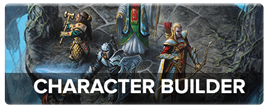
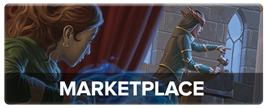
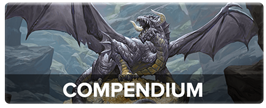
-
View User Profile
-
Send Message
Posted Nov 27, 2020True. Also, not everybody plays in an English-speaking country.
-
View User Profile
-
Send Message
Posted Nov 27, 2020I struggle with this as well. Best I've come up with is that a puzzle is a combination of the equivalent of a passcode and a passcode hint (or set of hints). So, in the real world, you might block access with something like a keypad. To get past, you need to type in a passcode. Normally IRL we don't leave hints lying around to determine the passcode. But part of the reason why is because we have largely standardized on how we handle passcodes. You're not supposed to, but many people reuse the same password or phrase or code for multiple applications, and the interface is almost always just something that lets you enter a sequence of letters or numbers or some combo. It's easy to get by with one or a small number of passcodes.
So go into D&D. There's no standard approach to this kind of thing and there's no electronics industry to leverage it even if there was. Each "passcode keypad" is a one-off, unique-made item, usually magical, likely created by the specific person who is trying to safeguard passage. This lock needs to be designed to not draw attention to itself (so it's usually "themed" for the facility'/dungeon/castle it's in). The solution is going to be custom and unique to the lock, which means it's difficult for authorized individuals to remember it among any others. So the lock cleverly provides hints to the passcode, as obscure as possible. The hints exist to jog the memory of those who have been granted access.
Funny thing is, as we become more security-conscious in the real world, we're encouraged to reuse passwords less. This in turn prompts many of us to either scribble the passwords down on sticky notes or at least provide hints to the same for our future selves. Neither is a great practice but it's what people do.
So when the Sphynx asks you a riddle, what it's really doing is providing your password hint. It's just a flowery, elaborate version of "What's the name of the street you grew up on?" (although perhaps a little less individualized).
-
View User Profile
-
Send Message
Posted Nov 28, 2020Yes, I’m curious how they will handle that in versions in other languages.
-
View User Profile
-
Send Message
Posted Nov 28, 2020No, you go to a forum without going into a thread, then click New Thread. You have to enter the first comment though.
-
View User Profile
-
Send Message
Posted Nov 28, 2020I've always struggled to create good puzzles, but I got much better when I started applying my knowledge as a magician to the designs! So this article had a nice little surprise for me, and had a good description of what puzzle design should be like. There should be that epiphany 'Ah-ha!' moment, if you can make it that way.
Also, just a note, I'm sorry to say that the Pledge, Turn, Prestige structure isn't used by real magicians, it was created for the movie. There is a similar three step structure that actual magicians ascribe to, and it's similar to the one in the movie, but those terms aren't used. I kind of wish they were, they sound a bit cooler than the real stuff hahah.
Thanks James!
-
View User Profile
-
Send Message
Posted Nov 28, 2020Yes, it will have a title and stuff.
-
View User Profile
-
Send Message
Posted Nov 28, 2020you mean like this? press the quote button, otherwise I have no idea what you mean so can't help
-
View User Profile
-
Send Message
Posted Nov 28, 2020If anybody feel every step of life is puzzle
-
View User Profile
-
Send Message
Posted Nov 28, 2020Yeah
-
View User Profile
-
Send Message
Posted Nov 29, 2020-
View User Profile
-
Send Message
Posted Nov 29, 2020Love this explanation! Relative to a password hint, most puzzle-hints have the additional strength and weakness that they can be derived by someone with sufficient cultural/esoteric knowledge but no explicit previous explanation of the password; this would let e.g. cultists from another city use the facility but also a particularly capable set of intruders.
-
View User Profile
-
Send Message
Posted Nov 30, 2020You don't make the barbarian's player physically pick up a thousand pound log to prove they can do it... DM's that force players to solve puzzles and riddles without letting them rely on their character's intelligence and knowledge are just absolute crap DM's.
-
View User Profile
-
Send Message
Posted Dec 1, 2020So adapt the puzzle in Tasha's to your world. If you've the capacity to create a world that uses a different language, then you, no doubt, have the capacity to adjust a premade puzzle to fit your world. It might take a little work, but it can be done. I would venture to say that it would make your puzzles just THAT much more intriguing.
-
View User Profile
-
Send Message
Posted Dec 1, 2020Ive made a puzzle / combat encounter in my campaign where a tower's descent was cut off by three curtains of magical lightning or a certain color, with a different colored gem overhead. The room's walls were littered with colored stones that could be pulled off of the walls, and the solution was to toss stones in the curtain to alter its color, until it reached a matching color to the gem overhead, after which it would dissipate and let the party through.
The first curtain required one stone, the second required two, and the third, three. If they did not solve the color scheme with the correct amount it would revert back to signify they were wrong and start over. Now by itself this isnt very exciting, but I added a pair of Invisible stalkers that would harrass them while they were trying to figure this out, In initiative, when it requires actions to pick and throw stones. At the bottom of the descent, an arcane crystal pulses with energy, dealing lightning damage to every party member on initiative count 20 to add to the urgency of it all. Time spent fighting the stalkers meant receiving more damage from the crystal, while ignoring the stalkers could be dangerous as well so choices needed to be made.
Once they reached the bottom they either could zoom out of the chamber or destroy the crystal to avoid damage, and stalkers were guarding the room and would let them leave and not give chase. It was a fun encounter and while it didn't take them very long to figure out the color combinations, the urgency of it all and the whole communication to coordinate stone tosses to be efficient made it very fun for everybody. It also tapped them out a little just before the climax battle of the arc this took place in. It's one of my best DM moments in this campaign and others so far :D
Feel free to use this somewhere if you want, i used a paint color mixer website to create my combinations and stones were of the three primary colors, plus black and white. It also meant i could keep track of the color the curtain was at all times and could provide them with much needed insight for the next steps.
-
View User Profile
-
Send Message
Posted Dec 1, 2020People aren't necessarily bad DMs if they make their players solve the puzzles themselves. Some people enjoy solving puzzles. What would be the point in designing a puzzle for the party to solve, only to have the wizard bypass the whole thing with a high INT check? If you just want to give smart characters a chance to shine, it would be better (and an awful lot easier) to set a magic lock that they could crack using Arcana, or to require some password that they could suss out with a History check. Puzzles are meant to be fun for the players. If a party doesn't enjoy puzzles in their D&D, it's easy enough to leave them out. If you as a player don't enjoy solving puzzles, it's on you to let your DM know that they're not fun for you.
-
View User Profile
-
Send Message
Posted Dec 1, 2020If a DM forces their players to solve a puzzle or riddle without relying on any relevant checks from the characters... yes, they are a bad DM with a capital B A D. And yes, I know it's on my to say that I don't like them. But that doesn't always stop DM's from using them.
-
View User Profile
-
Send Message
Posted Dec 2, 2020But what if the players like that?
-
View User Profile
-
Send Message
Posted Dec 2, 2020Hey i new here to play D and D beyond
-
View User Profile
-
Send Message
Posted Dec 2, 2020HI JOELTHEWALRUS!!!!!!!!